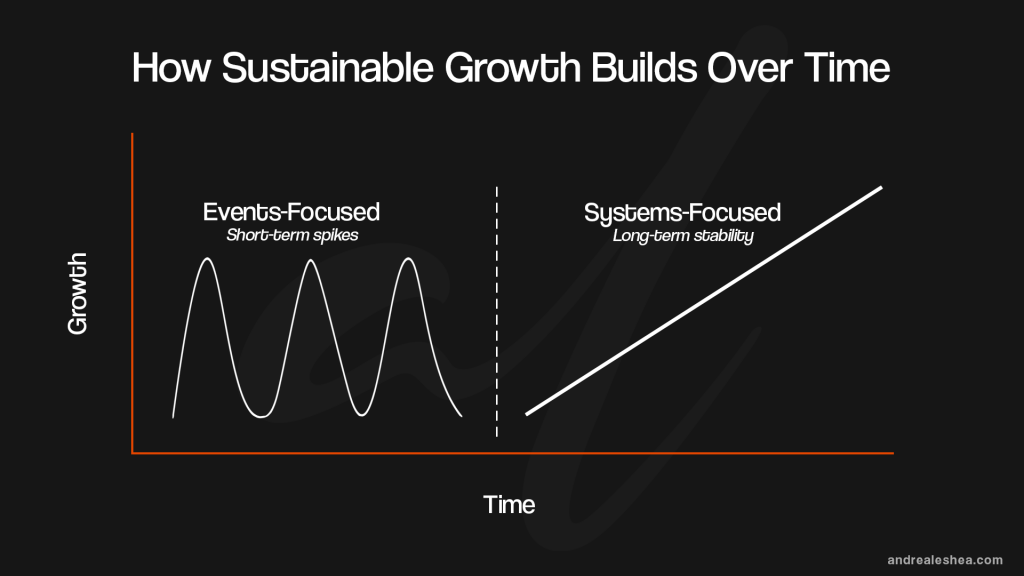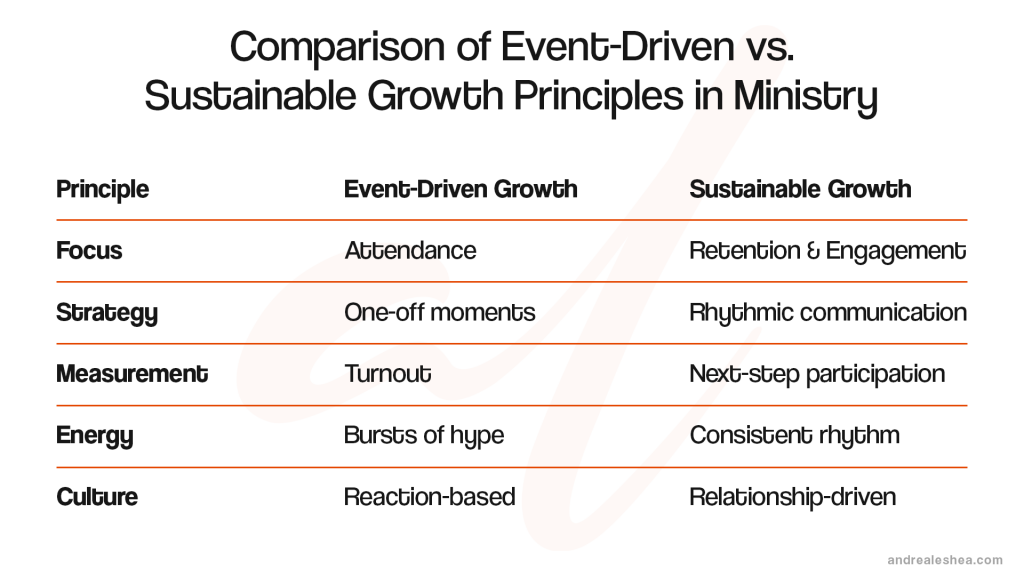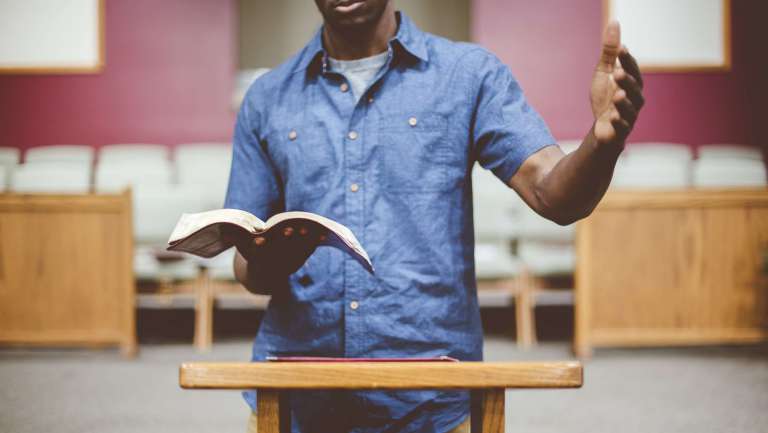Summary: Many churches rely on events as their primary growth strategy and fill the calendar with themed Sundays, conferences, and community gatherings that create excitement but rarely build lasting momentum. While events generate energy, they do not always create engagement. In this article, I explain why event-driven growth is losing effectiveness, how cultural shifts have reshaped church participation, and what steps leaders can take to build sustainable, relational growth that lasts beyond the excitement of a single moment.
Full Rooms Don’t Equal Sustained Growth
Every pastor understands the rush that comes with a major event. The atmosphere is alive, attendance is up, and the team feels a sense of accomplishment. But soon after, participation dips again, volunteers are tired, and attention shifts to planning the next big thing. Churches everywhere are caught in this pattern, investing significant time and resources into moments that feel successful but fail to create sustained movement.
We are in a new season of ministry. The attractional model that once relied on high-impact events is losing influence. This shift is not because events are wrong but because they were never meant to carry the full weight of growth. The decline of event-driven ministry is not a sign of failure. It is an invitation to build something healthier, more consistent, and more aligned with how people grow today.
“In event-driven churches, the event is the goal. In sustainable churches, the event serves the goal.”
Why Reliance on Events Alone Is Less Effective Now
- Cultural Context Has Changed
People today live in a world full of noise, content, and constant choice. The average adult is exposed to thousands of marketing messages daily through social media, entertainment, and online activity. Your church’s outreach and event promotion no longer compete with other ministries alone. They compete with every distraction in your audience’s life. - Relational Expectations Have Shifted
People today value consistency and authentic community more than large-scale experiences. Many want to be part of something ongoing and relational rather than a one-time moment. - Team Fatigue Is Rising
Lifeway Research reports that stress and discouragement are among the top challenges facing pastors and church staff today. Many leaders experience burnout when their calendars revolve around constant event preparation instead of steady ministry rhythms.
The Real Problem: Energy Without Direction
Event-driven ministry feels productive because it produces visible results. Crowded rooms and high engagement seem like momentum, but activity does not always equal health. When all attention and effort go into preparing for one event, there is little capacity left to nurture what happens afterward.
Momentum is built in the days and weeks following an event, not during it. Churches that are thriving in this era measure success differently. They value participation and retention over one-time attendance. They care less about how many people show up once and more about how many stay connected over time.
The difference becomes clear when you look at how growth actually builds over time.

Event-focused churches see growth in short, sharp spikes. System-focused churches build gradual, stable growth that compounds with consistency.
Sustainable Ministry: A Better Model
The alternative to event dependence is not avoiding events. It is integrating them into a wider system that supports growth through communication, follow-up, and discipleship. Sustainable ministry treats events as part of an ongoing rhythm, not isolated moments.
Sustainable growth is built on three connected layers.
- Reach
Reach is how people first connect with your church. Outreach events and special Sundays still matter, but every invitation should point people toward something next. It is not enough to draw people in. They need a clear and meaningful next step once they arrive. - Rhythm
Rhythm is the pattern that builds trust. Churches grow when their communication is consistent. Regular follow-ups, shared stories, and opportunities for involvement show care and reliability. Consistency communicates stability in a world that feels unpredictable. - Relationships
Relationships are what turn engagement into belonging. Events raise awareness, but relationships create discipleship. When people build real connections through small groups, volunteer roles, or pastoral follow-up, they stop being attendees and begin to live as part of the community. Research from Barna and Gloo’s State of the Church – Relational Engagement report shows that relational connection and small group involvement are among the strongest indicators of long-term church participation, with 55 percent of small group members saying their group is essential to their faith.
These layers work together to create consistency, clarity, and connection that extend far beyond a single event.
Here’s what sustainable growth actually looks like in practice:

This shift changes everything from how success is measured to how teams plan and lead. When churches focus on retention, rhythm, and relationships instead of hype, growth becomes both healthier and more sustainable.
How to Shift from Event-Driven to Sustainable Growth
Moving away from an event-dependent model does not mean giving up creativity. It means applying creativity more strategically. The following steps can help your team make that transition.
- Evaluate what happens after your events. Review your last few major gatherings and identify what follow-up occurred. Was there a clear process or just rest before the next project?
- Create a defined next-step pathway. Each event should connect attendees to something relational or spiritual, such as joining a group, volunteering, or connecting with a ministry leader.
- Build a communication rhythm. Develop consistent touchpoints such as weekly updates, community highlights, or volunteer recognition.
- Empower ownership. Assign specific leaders to manage guest follow-up, engagement, and storytelling so that next steps happen consistently across ministries.
- Measure retention as carefully as attendance. Attendance shows who came. Retention shows who is growing. Both metrics matter.
These are not marketing tactics. They are leadership habits. Practiced over time, they transform the emotional highs and lows of event-based ministry into steady, sustainable growth.
The Opportunity Ahead
The end of event-driven growth is not a loss. It is an opportunity to lead more intentionally. Churches that will thrive in the coming years will not be those with the biggest events but those with the strongest systems.
Events will always matter. They are valuable moments of connection, celebration, and outreach. But moments do not mature believers. Discipleship does. The opportunity before leaders today is to turn moments into momentum by creating systems that sustain what God begins.
Take the Next Step
If your church is ready to move from event energy to lasting momentum, The Church Momentum Starter Kit will help your team begin that shift. It’s a simple, team-ready resource designed to guide an honest conversation about where your energy is going and how to build growth that lasts.
Use it in your next team meeting or planning session to spark practical dialogue and identify one rhythm you can strengthen right away.
Final Thought
The future of church growth will not depend on how many people attend one event. It will depend on how well we help those people stay, grow, and serve together. Review the five steps above with your team and choose one to implement this month. The goal has never been to fill a room. It has always been to form a community.





